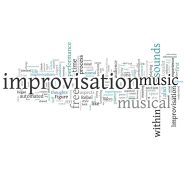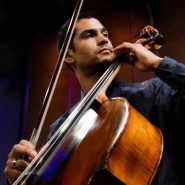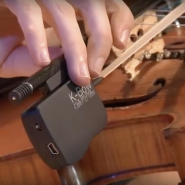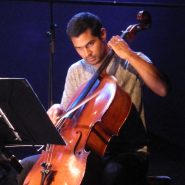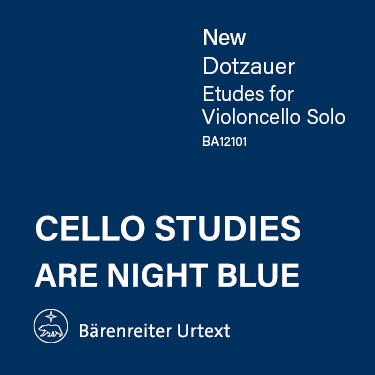
Author: Jeffrey Zeigler
Described by the New York Times as “excellent”, and a player who performs “with unforced simplicity and beauty of tone”, Jeffrey Zeigler was the cellist of the internationally renowned Kronos Quartet for eight seasons. One of the most celebrated and influential ensembles of our time, Zeigler has performed over a thousand concerts worldwide, has premiered over 200 works and has collaborated with many of the world's most versatile and innovative composers and performers. In the process, Zeigler has played an integral role in redrawing the boundaries of the string quartet medium.
Zeigler has been the recipient of the Avery Fischer Prize, the Polar Music Prize, the President’s Merit Award from the National Academy of Recorded Arts and the Chamber Music America Richard J. Bogomolny National Service Award among others.
Zeigler has given many notable premiers including works by John Adams, Laurie Anderson, Damon Albarn (of Blur and Gorillaz), John Corigliano, Philip Glass, Henryk Gorecki, Vladimir Martynov, Steve Reich, Terry Riley, Valentin Silvestrov and Peteris Vasks to name a few. Notable collaborations include Asha Bhosle, The Bang on a Can All-Stars, jazz pianist Billy Childs, Noam Chomsky, The Merce Cunningham Dance Company, Philip Glass, Paul Hillier, Zakir Hussain, Nine in Nails, the great Azerbaijani singers Alim and Ferghana Qasimov, Afghani Rubab virtuoso Homayoun Sakhi, pipa virtuoso Wu Man, Tom Waits and Howard Zinn.
The 2013/2014 Season will see the launch of a number of new projects and collaborations. Highlights include a duo with Laurie Anderson and a trio with the experimental pianist Hauschka and the Finnish rhythm master Samuli Kosminen. Both of these collaborations premier at the River to River Festival in New York City. Zeigler will also be giving the world premier of a new Cello Concerto by Canadian composer Scott Good with the Vancouver based jazz band, The Hard Rubber Orchestra. Additionally, Zeigler will be premiering a number of newly commissioned works by Kyle Bartlett, Nimrod Borenstein, Anna Clyne, Bryce Dessner (of The National), Mohammed Fairouz, Jesse Jones, Glenn Kotche (of Wilco), Richard Reed Perry (of Arcade Fire), Paola Prestini and John Zorn.
Mr. Zeigler has appeared as a soloist with the Los Angeles Philharmonic, the Toronto Symphony, the Royal Danish Radio Symphony, the Basel Symphonie, the Brooklyn Philharmonic and the Sioux City Symphony and has performed under the batons of Seiji Ozawa, Christoph Eschenbach, Michael Tilson Thomas, Leonard Slatkin, Robert Spano, Sir Roger Norrington, Mstislav Rostropovich, Peter Oundjian, James Conlon, John Adams and Dennis Russell Davies.
Over the course of his celebrated career, Mr. Zeigler has released over a dozen recordings for Nonesuch Records, Deutsche Grammophon and Smithsonian Folkways and has appeared with Norah Jones on her album "Not Too Late" on Blue Note Records. Zeigler can also be heard on the film soundtrack for Darren Aronofsky's film, "The Fountain" featuring music by Clint Mansell and including performances by the Scottish band, Mogwai.
Jeffrey Zeigler holds a Bachelor of Music degree from the Eastman School of Music at the University of Rochester where he was a student of Stephen Doane, and a Master of Music degree from the Shepherd School of Music at Rice University where he served as the Teaching Assistant for Paul Katz. He then continued his studies at Indiana University under Janos Starker. Mr. Zeigler has also studied at the Britten-Pears School in Aldeburgh, England where he was a pupil of William Pleeth and Zara Nelsova. He is also the recipient of an Honorary Doctorate of Fine Arts degree from the Cornish College of the Arts.
Zeigler served as the Cellist-in-Residence at Texas Christian University and as a Visting Lecturer at Indiana University at Bloomington. Recently, Zeigler was appointed to the Cello Faculty at Mannes College The New School For Music. This season, he will also be a Distinguished Visiting Professor at the University of Oregon.
jzcello.com
www.blackshipmoment.com
By Jeffrey Zeigler April 14, 2016
Subjects Beyond the Traditional

By Jeffrey Zeigler April 25, 2015
By Jeffrey Zeigler March 12, 2013
Subjects Artists
Tags airports, Alix Spiegel, Amanda Palmer, Anna Clyne, Arizona State University, campaign, cello, cellobello, Chicago Symphony Orchestra, Composer-In-Residence, donations, emeritus psychologist, entrepreneurs, funding a project, fundraising, fundraising in the 21st century, goals as artists, Hare, incentives, KickStarter, Krishna, millions of dollars, NPR, online funding program, Paola Prestini, perks, personal connection, process, raising money, receive funding, Rule of Reciprocation, solo album, supporters, TED talks, vision into art, work of Robert Cialdini
By Jeffrey Zeigler November 1, 2012
By Jeffrey Zeigler April 18, 2012
Subjects Repertoire
By Jeffrey Zeigler February 27, 2012
By Jeffrey Zeigler November 21, 2011
Subjects Technology
Tags cello, cellobello, device, discussion, interactions, Jeffrey, k-bow, Kronos, Master Class, music, Quartet, Zeigler
By Jeffrey Zeigler May 29, 2011
Subjects Technology
By Jeffrey Zeigler March 18, 2011
Subjects Travel
Tags air travel, airlines, cello, control, Experience, extra seat, FAA, FAA passenger bill of rights, flexible, flying, Jeffrey, Kronos Quartet, Quartet, regulations, rules, safety, Travel, TSA, Zeigler
By Jeffrey Zeigler December 1, 2010
Subjects Technology
